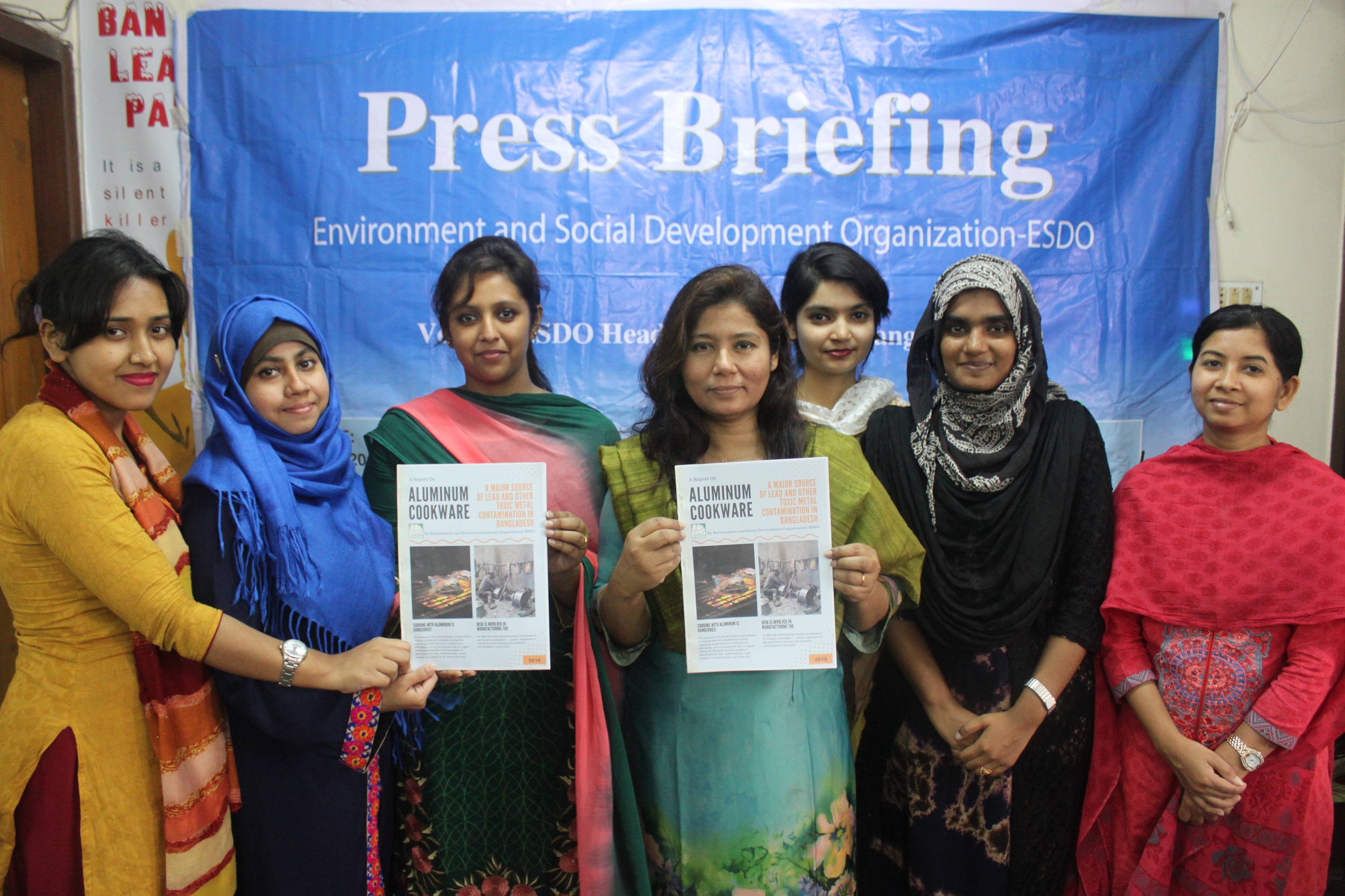TOXIC ALUMINUM COOKWARE IN BANGLADESH

Dhaka 28 April, 2018: Aluminum cookware releases as much as 216 mg aluminum to food during its first boil- mentioned in a study report entitled ” Aluminum Cookware: A major Souyrce of Lead and Other Toxic Metal Contamination in Bangladesh” published by ESDO through a press briefing.


Aluminum cookware is being used for cooking purpose in all over the world. Most of the cookware, used in South Asian countries (including Bangladesh), is made up of aluminum. Cost effectiveness and heat conductance account for its popularity. Despite being harmless in lower concentrations, high aluminum intake results in chronic health effects in the long run.[1]In Bangladesh high demand of aluminum cookware have led to more and more development of aluminum cookware manufacturing industries. Due to its availability and comparatively reasonable price the use of aluminum cookware is now widespread.
To assess the level of metal exposure from aluminum cookware, to determine the demand of this cookware and to identify the level of awareness among the local people about the issue Environment and Social Development Organization-ESDO took the initiative of conducting extensive study in Bangladesh. This report contains how the study was conducted, the analyzed results, an overview of current situation of aluminum cookware used in Bangladesh, the risk associated during manufacture of aluminum cookware, the source and pathway of exposure of aluminum to human, health and environmental impacts, a generalized conclusion and recommendation for further investigation.
Considering the health risk from aluminum published in various study reports, such initiative was taken by ESDO. Aluminum can leach into food, especially when heated. Studies have shown a link between Alzheimer’s and aluminum. Aluminum has also been linked to DNA damage and aging of cells, breast and prostate cancer, osteoporosis, and can damage or irritate may other systems.[2]
Most of the aluminum cookware found in local market of Bangladesh is made of scrap metals. During the analyses it was observed that among the metal released from low grade aluminum pots lead content is high. Whether from higher grades higher level of copper are released. Four aluminum cookware samples from the local market of Bangladesh were collected by ESDO team and analyzed in a laboratory of San Francisco which showed an average of 216mg aluminum, 6μg Arsenic, 7.5μg Cadmium, 2μg Lead exposure per serving.
A questionnaire survey was done to assess the level of awareness and the level amount of usage among the local people. For the field survey, Dhaka metropolitan area and adjoining Munshiganj, Manikganj, Savar, Gazipur and Tongi area was selected as sampling area. Among 1800 respondents, 800 were from Dhaka Metropolitan Area, and 200 samples each for Munshiganj, Manikganj, Savar, Gazipur and Tongi.
It was found that around 97.56% of the people surveyed (both urban and rural) use aluminum utensils (Cookware, bake ware, cutlery etc.).The level of awareness was found very low, about 4.94% in survey locations.
There is still no regulation regarding the production, import, use and disposal of aluminum utensils in Bangladesh. Since potential exposure to metals released from aluminum cookware during cooking poses significant health hazards, urgent attention has been a must.
[1] Semwal, A. D., A. Padmashree, M. A. Khan, G. K. Sharma, and A. S. Bawa. 2006. Leaching of aluminum from utensils during cooking of food. Journal of the Science of Food and Agriculture 86: 2425-2430.
[2]https://embracingimperfect.com/nontoxic/nontoxic-cookware/


